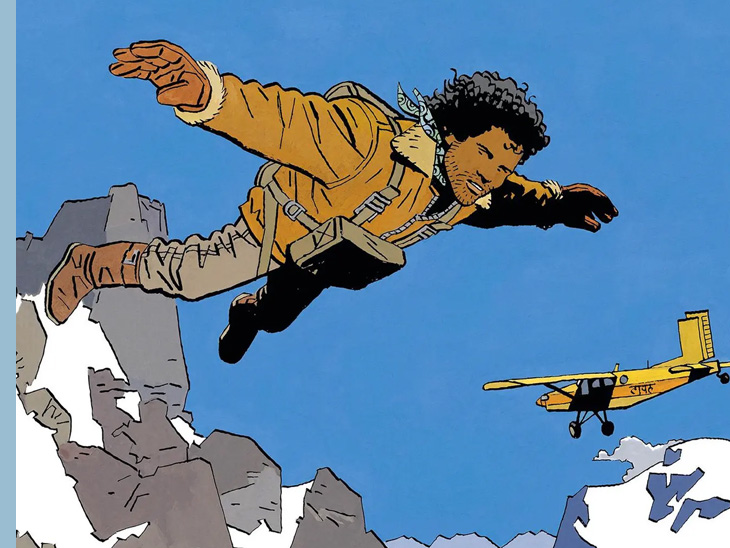DO YOU REMEMBER, JONATHAN
One of the most important Swiss comic artists of all time, Cosey (1950), was part of a new generation of European comic artists who emerged in the 1970s, making stories for more mature audiences rather than just children. Cosey broke new ground with his philosophical travel stories, for example the full-blown series ‘Jonathan’, he started in 1975. When the cartoonist spread this story about a Swiss dropout in Tibet, he had no idea that ‘Jonathan’ would be with him for 17 parts and 46 years of wandering. Cosey's characters are always on the search, both literally and mentally. For example, ‘Jonathan’ is constantly looking for himself and freedom. His comics depict picturesque landscapes set in Europe, Asia or America, but are first and foremost intelligent character studies where the protagonists undertake a spiritual journey to find their inner self.
I'm certainly not going to claim that I'm a great comics connoisseur or that I have a large collection of comics on my bookshelf, but during my childhood you could often find me in the comic book store, or in the record store. At that time we had the luxury that there was a very good comic shop in both my hometown and in the nearby provincial capital, where comic artists were regularly invited to sign their latest album. I have often queued for an original drawing in my new comic.
As a child I grew up with comics from Bessy — the blue ones in black and white with a supporting colour — Suske en Wiske, the two-colour series, and Jommeke. I still remember wonderful moments when I retreated for a few hours to quietly read the latest comic. Later, when I discovered the comic book store, I started collecting other comic series like Storm, XIII, Durango, Aria, Largo Winch and Yakari to name a few. And then suddenly there was Jonathan, a cartoon with a completely different kind of storyline. Poetic, adventurous and soothing, but at the same time compelling. It became my favorite series, despite the fact that I don't have all the volumes in my collection, but I'm working on it. When Cosey released In Search of Peter Pan I was completely captivated by his style. I've been re-reading this two-part comic strip regularly since then, so Cosey definitely deserves a place in my list of inspiring artists.
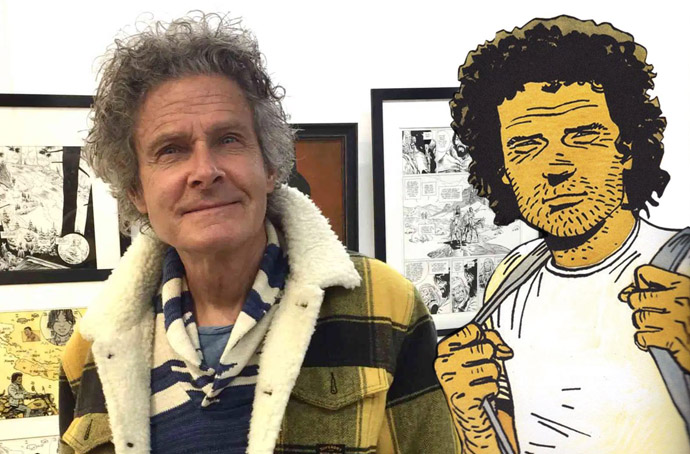
After 46 years of good and loyal service at the end of the world, Jonathan returns home. But Cosey does not put down his pencil definitively. He still has a lot to tell. © Daniel Maghen
Cosey was born Bernard Cosendai in 1950 in Lausanne, Switzerland. In 1966 he left school and started working as an illustrator for a advertising agency. At the same time he trained as a graphic designer and graduated in 1969. Meanwhile, he won 3rd prize in a cover contest for Spirou! Before Cosey could realize his childhood dream: thinking in drawings, communicating through images and expressing himself through the comic strip, he became an assistant and colorist for his idol, the artist Derib, at the time the only comics professional in Switzerland. Derib is best-known as illustrator of the Franco-Belgian comic book series Yakari, about a young Sioux Native American who has the ability to understand and speak animal languages, and Buddy Longway, about about a trapper who lives in the wilderness. They quickly become friends and Derib allows him to practice his talents as a colorist at the end of his course, Cosey becomes his apprentice and colors Yakari. Derib encourages him to launch his own series.
"When I started Jonathan, Tibet was little documented. So I started traveling. Traveling is something very important to me because it is a kind of spiritual nourishment. This is how the raw material for my ideas and photos is created." — Cosey
TRIBUTE TO TIBET | A quest for purity
Soon after Cosey worked as Derib's assistant he met another childhood idol: Tintin's father, Georges "Hergé" Remi. For a young draftsman as himself, even talking to Hergé about the weather was an inspiration, but they also shared an interest in philosophy, indigenous peoples — and Tibet!
In 1975, at the request of the new management of Tintin magazine, the young author embarks on what will become his flagship: Jonathan. His hero is a new type of adventurer in comics: he is a descendant of the literary beat generation, an observant traveler who prefers art and books to weapons, a ghost searching for his place in the world ... An imaginary alter ego of Cosey himself.
"When I knew Jonathan, we were both nineteen. He was nothing like a cartoon hero, and I ... was far from being a draftsman!" — Cosey
In that same year, without ever having been to Tibet before at the time, Cosey began drawing Remember, Jonathan. This adventure series follows the wanderings of a young amnesiac Swiss traveler in the Himalayan massif in the footsteps of his past, which is considered a militant work for Tibet. At first he documented himself with the rare books and photos that exist and went on his first trip there in 1976. He became the author of comics and from Switzerland to Japan via the Himalayas and Tibet, he has been taking us around the world for almost fifty years. Fascinated by Asia, where most of Jonathan's adventures take place, Cosey has traveled repeatedly to Nepal and Tibet.
"Somewhere in the Himalayas on the border of Nepal and Tibet, Jonathan wanders in search of his memory. He escaped from a psychiatric hospital where he spent three months. He doesn't remember anything about his past, only he is sure he has to go back to Tibet. As he gets closer to the Himalayas, Jonathan becomes more and more convinced that his life is closely connected to the lives of the local people. But the road is still long and the memories are sometimes painful ..."
This series of Jonathan, the stories of which he continued, ensured him rapid success. In 1976 he received the Prix Saint-Michel Avenir and in 1979 the Grand Prix Saint-Michel, a comic prize awarded in Belgium from 1971 to 1986. In January 1982, Jonathan's seventh volume, titled Kate, won the Alfred for best album at the Angoulême festival, considered the Nobel Prize in Comics.
After the pre-publication of the eighth volume of Jonathan in 1981, Cosey was ready for a new challenge. A need to catch his breath, to embrace other themes, led him to be unfaithful to Jonathan and to start drawing a sublime diptych set in Switzerland: À la recherche de Peter Pan (In Search of Peter Pan) in addition to Le voyage en Italie and Saigon-Hanoi, which takes the prize for the best screenplay on Angoulême.
But Kate's great success prompted the publisher, Le Lombard, to ask Cosey to draw another Jonathan. In Search of Peter Pan — originally issued in two volumes in the adult collection ‘Histoires et Légendes’ in 1984-1985 — is a new critical and public success: the album sells more than the last Jonathan to date, much to the surprise of the Lombard.
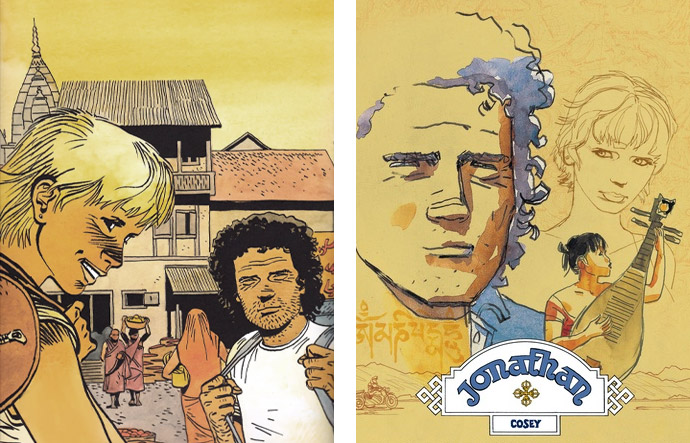
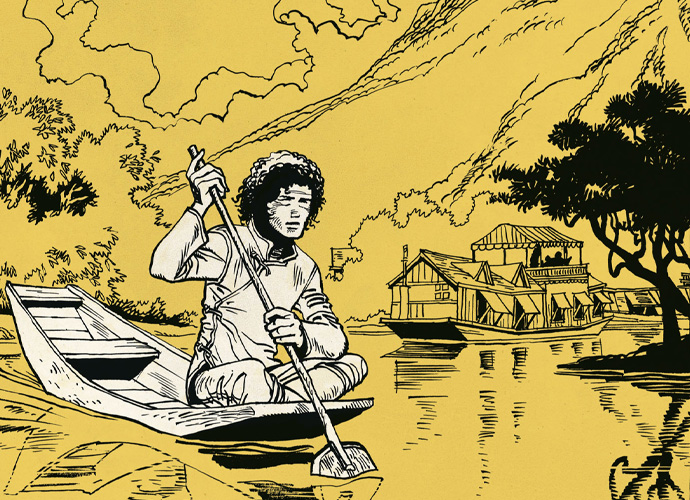
"Jonathan is an improved version of me in every way. I'm just his shadow." — Cosey
HOLIDAY IN VALAIS | In search of Peter Pan
Cosey is not only known as the author of Jonathan . Since the 1980s he has also published a number of essential one-shots, such as In Search of Peter Pan and Le voyage en Italie, which have the status of modern comic classics. After all, even though the stories are not at all similar, his one-shots are coincidentally or not always variants on the same theme: the main character is traumatized for reasons we are slowly learning, he is trying to come to terms with himself and to give his life a new direction.
In Search of Peter Pan is a masterpiece centered around his native Switzerland and the Valais Alps. Cosey traveled back years — instead of miles: the story is set in Valais (Wallis) in the 1930s, where the artist has spent his holidays since childhood. Cosey's comic doesn't have much in common with James Matthew Barrie's original Peter Pan story. He was inspired by some passages from the book and reproduced them in his own unique way.
The story is about a writer's strange journey through the Valais Alps in the footsteps of a boy who never wanted to grow up. The writer moves to the small and back to the remote village of Ardolaz, a forgotten enclave where life has changed little for centuries, to work on his new novel, according to his publisher. But the stay develops more and more into a pilgrimage to the place where his brother died. It becomes a place where the author encounters his past. His search for his brother's legacy becomes a race against time as the unstable glacier above the village threatens to slide away, wiping out the Ardolaz valley — just as the modern 20th century inexorably erodes the way of life and traditions of its inhabitants.
Cosey's portrayal of fairytale Wallis is captured in powerful, atmospheric images. In Search of Peter Pan was awarded the 1988 Max and Moritz Award for the best German-language publication and is regarded as Cosey's most mature and most demanding work.
"My heroines are rarely passive. I like to talk about female characters who are not puppets, i.e. nunuches , nice or just beautiful women. I prefer women with a strong personality and possibly a bad mood!" — Cosey
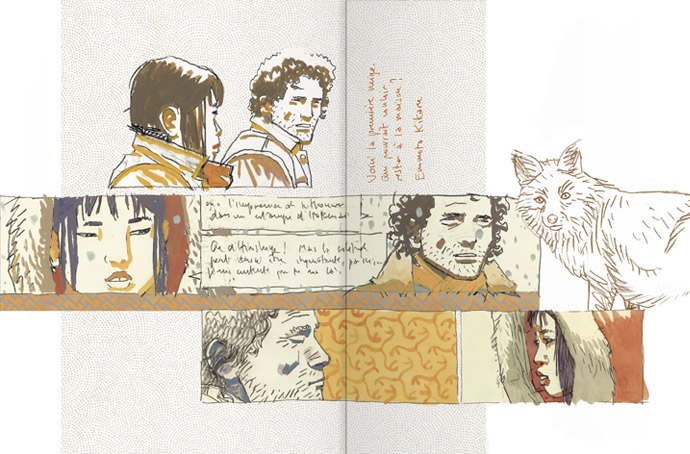
Cosey is very modest, but proud of what he has achieved. He does not call himself an excellent draftsman, but many comics enthusiasts, including myself, think the opposite because of the originality, the way he tells a story, the way he divides and fills the space of a page, even the composition of the individual pictures. The pages in his comics are filled with kind and beloved faces, revered monuments and admirable landscapes. Cosey an artist of line, of purity, of successive shots and a master of color.
Cosey's drawing style is fairly unique: static and his characters don't move much. There is no one who draws in his idiom — rather a bizarre finding for an influential author — and that puts him on a par with Europe's best-selling author, Uderzo.
I'VE GOT MUSIC ON MY MIND | Background music
In addition to the text-loaded comic strips — rather unusual for an adventure story — Cosey suggests novels, films and music recordings which fit the mood of a particular story. Cosey is a music lover and he appreciates many styles of music. He likes to communicate this to the reader because in his opinion it is very complementary to reading comics. Talking about the music his characters listen to is part of their portrayals.
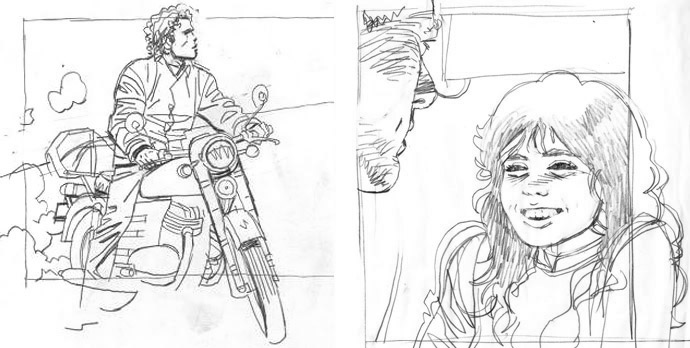
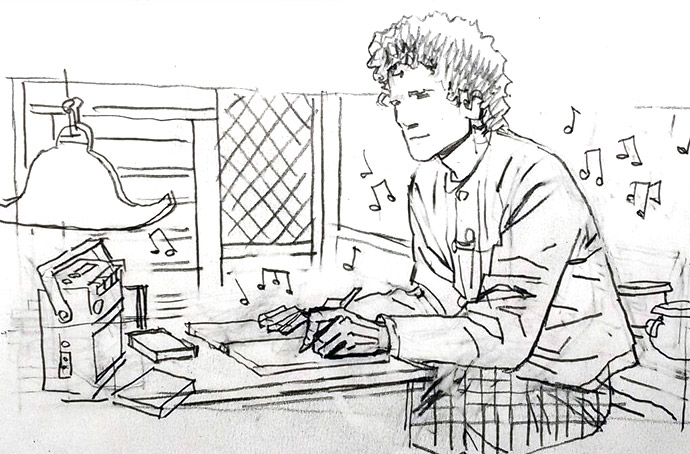
The music recommendations make Jonathan something special: each of the 17 volumes contains a list of songs that you should listen to while reading. There are, for example, songs by Mike Oldfield, Keith Jarrett, Ravi Shankar or a Chopin piano concerto. It's up to the reader to check them out before or after reading his work. Or — in the case of his recommended songs — play them as background music.
Last year, almost half a century later, Jonathan returned to the Vaudois Alps. The circle is round. Except for Cosey who hopefully comes up with new projects. Cosey's favorite comics, he revealed in an interview, are In Search of Peter Pan, Kate, Remember Jonathan (despite the drawing's weaknesses), and Saigon-Hanoi. So if you've never read one of his comics before, it might be a good idea to start with one of these ...
A great comic book series that ends in a crisp and clear, that's a rarity. Cosey knows of no other comic that ends like this. He admits he hesitated a lot and was afraid he would regret it, but in the end he took the risk. There are too many endless series, but Jonathan is not one of those heroes who will return until the end of time. In any case, it is impossible that any other cartoonist can reproduce the nature of the Jonathan series because the identification between Cosey and his hero is total, or almost.
For those who still doubted, The Trail of Yeshe (the 17th and very last album) removes all ambiguity. From the cover, Cosey shows Jonathan's face in a rearview mirror. The cartoonist looks at himself in the mirror and sees his character: Jonathan, a faithful self-portrait of Cosey. The identification is completed in the very nice last two pages where we see that Jonathan has returned to Switzerland after his years of wandering, back "home", to Cosey. Rather, the silhouettes of the two men are side by side, it is assumed, and merge into one another.
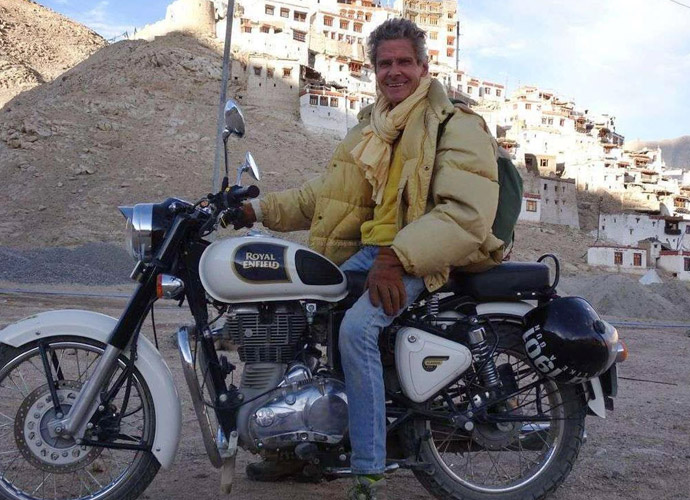
"Jonathan found what he was looking for but I didn't, I keep looking. I am therefore completely deluded. Like almost everyone!" — Cosey
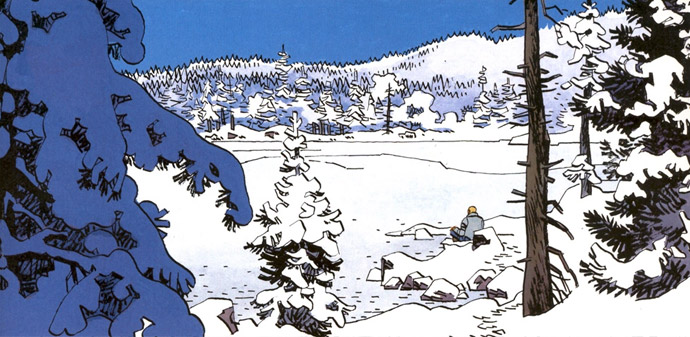
All images courtesy of the artist. Photos © Cosey.
More story related movies/stories:
Related stories in Woodland Magazine:
Sources:
